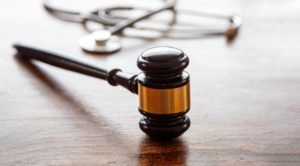In 2016, unintentional injuries were the third leading cause of death in the United States. Although the precise number of fatal accidents changes annually, unintentional injuries remain a leading cause of death among Americans in every age group.
Losing a loved one is always devastating, but it can be especially traumatic when the death is totally unanticipated. In many scenarios, the surviving family members struggle to cope with the loss not only emotionally but also financially.
If a member of your family has died due to another person’s negligence or intentional wrongdoing, you may have the right to file a wrongful death claim. For your case to be successful, you must be able to prove both liability and damages.
The evidence your attorney will need to support your claim will depend on the specific facts of your case. But generally speaking, the following evidence often plays an important role in proving damages related to a wrongful death:
- Medical Records
If your loved one did not die immediately from the accident, your family may be entitled to compensation for treating his or her final injury or illness. Save all medical records, pharmacy receipts, diagnostic images, and invoices for any equipment the victim needed prior to passing.
- Testimony from Well-Credentialed Experts
If the deceased was gainfully employed before the fatal accident, surviving dependents may be entitled to compensation for lost income and benefits. Depending on the circumstances, they may also be able to pursue compensation for loss of anticipated inheritances.
Estimating a reasonable figure for these damages can be complicated, but a personal injury attorney can help. A reputable and experienced law firm will have access to experts in the deceased’s industry, as well as economists, who can help calculate a fair amount for lost income.
- The Journal Entries of Surviving Loved Ones
Claimants in wrongful death cases may be able recover compensation for non-economic damages like:
- Loss of companionship, comfort, and guidance;
- Mental anguish;
- Loss of solace; and
- Loss of services, protection, care, and assistance.
Because these damages are intangible, proving their value can be challenging. Unlike funeral expenses and medical bills, there are no receipts for mental anguish and loss of solace.
There are, however, many other types of evidence your attorney may use to prove that you incurred non-economic damages. One example is a daily journal in which you record how the death has affected your life and the lives of other family members.
Call 800-770-7008 to Speak with a Wrongful Death Lawyer in Minneapolis
If you want to file a wrongful death claim in Minnesota, turn to the compassionate personal injury lawyers at Bradshaw & Bryant. We are committed to helping families regain their financial footing in the wake of a devastating loss. Call 800-770-7008 or use our Online Contact Form to set up a free case evaluation with a wrongful death attorney in Minneapolis

A founding partner with Bradshaw & Bryant, Mike Bryant has always fought to find justice for his clients—knowing that legal troubles, both personal injury and criminal, can be devastating for a family. Voted a Top 40 Personal Injury "Super Lawyer" multiple years, Mr. Bryant has also been voted one of the Top 100 Minnesota "Super Lawyers" four times.










Comments for this article are closed.